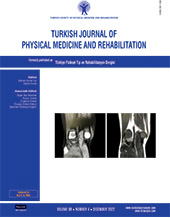The efficacy of isokinetic strength training versus core stability training on the trunk muscle strength and quality of life after surgical repair of incisional hernia in adolescents
2 Department of Physical Therapy for Surgery, Faculty of Physical Therapy, Alsalam University, Tanta, Egypt
3 Department of Biomechanics, Faculty of Physical Therapy, Cairo University, Giza Governorate, Egypt
4 Department of Health and Rehabilitation Sciences, College of Applied Medical Sciences, Prince Sattam Bin Abdulaziz University, Saudi Arabia
5 Department of Physical Therapy for Pediatrics, Faculty of Physical Therapy, Cairo University, Giza Governorate, Egypt DOI : 10.5606/tftrd.2022.9899 Objectives: The study aimed to compare the impact of isokinetic strength training (IST) with core stability training (CST) in terms of trunk muscle strength and quality of life (QoL) after surgical repair of incisional hernia in adolescents.
Patients and methods: The prospective, randomized, comparative study was conducted at the College of Applied Medical Sciences, Department of Health and Rehabilitation Sciences between August 2019 and June 2020. Thirty patients (16 males, 14 females; mean age: 17.1±0.6 years; range, 12 to 18 years) who had undergone primary incisional hernia repair surgery were included in the study. The patients were randomly divided into two groups: the IST group of 15 patients who underwent the isokinetic exercise program for trunk muscles and the CST group of 15 patients who practiced the core exercise program. Each group exercised three times per week for six weeks. All patients were assessed pre-and post-treatment by an isokinetic dynamometer for trunk flexors and extensors at 60 and 90°/s angular velocities and the European Registry for Abdominal Wall Hernias (EuraHS)-QoL questionnaire.
Results: The trunk flexor and extensor Peak torque/body weight ratio at 60 and 90º/s angular velocities and QoL were significantly improved in both IST and CST groups (p<0.05). The post-treatment values of both groups revealed marked but not statistically significant differences in all measured variables (p>0.05).
Conclusion: Both IST and CST are effective training programs that can improve the strength of trunk flexors and extensors as well as QoL after surgical repair of incisional hernia in adolescents.
Keywords : Core stability training, incisional hernia, isokinetic dynamometer, isokinetic strength training, quality of life

















